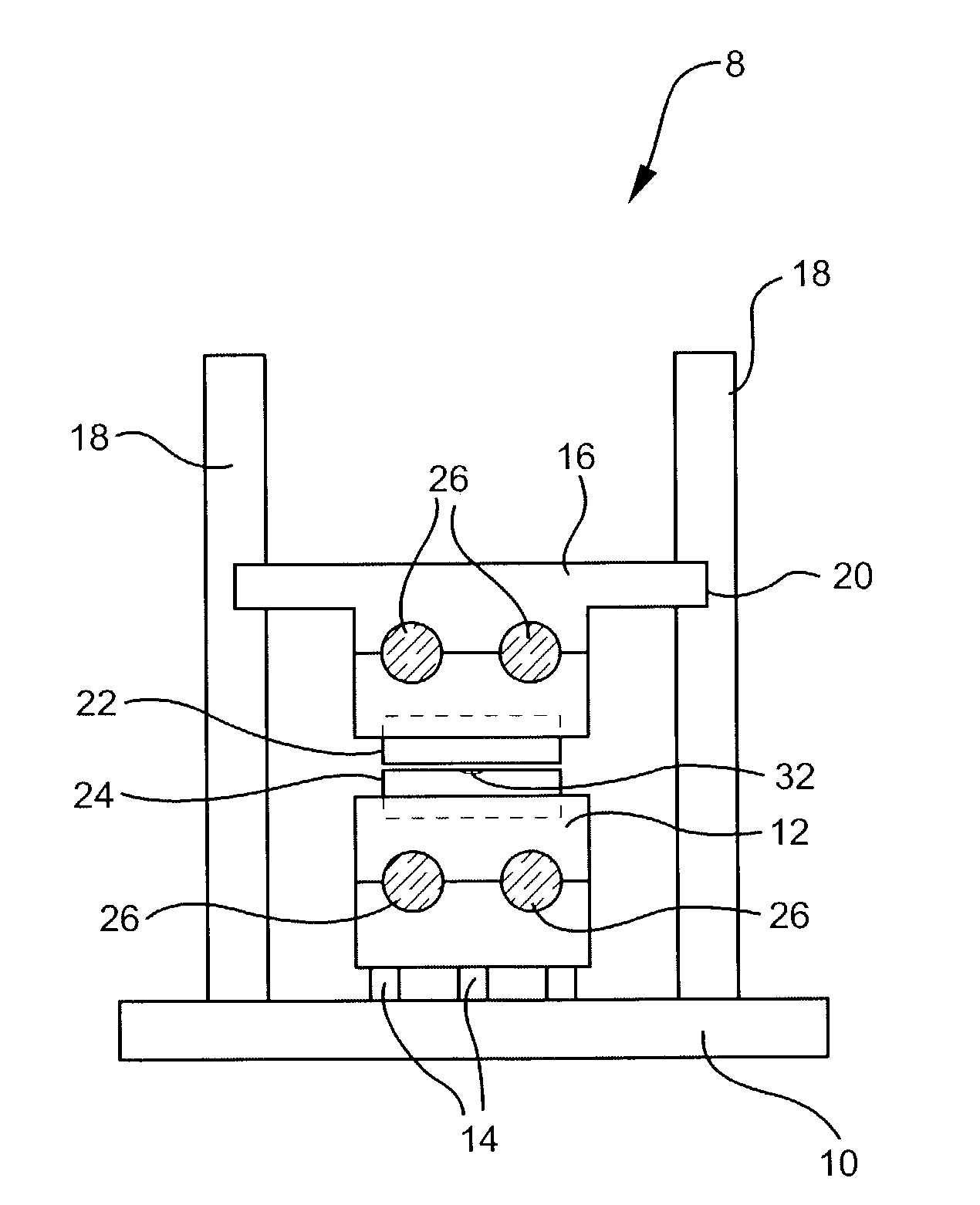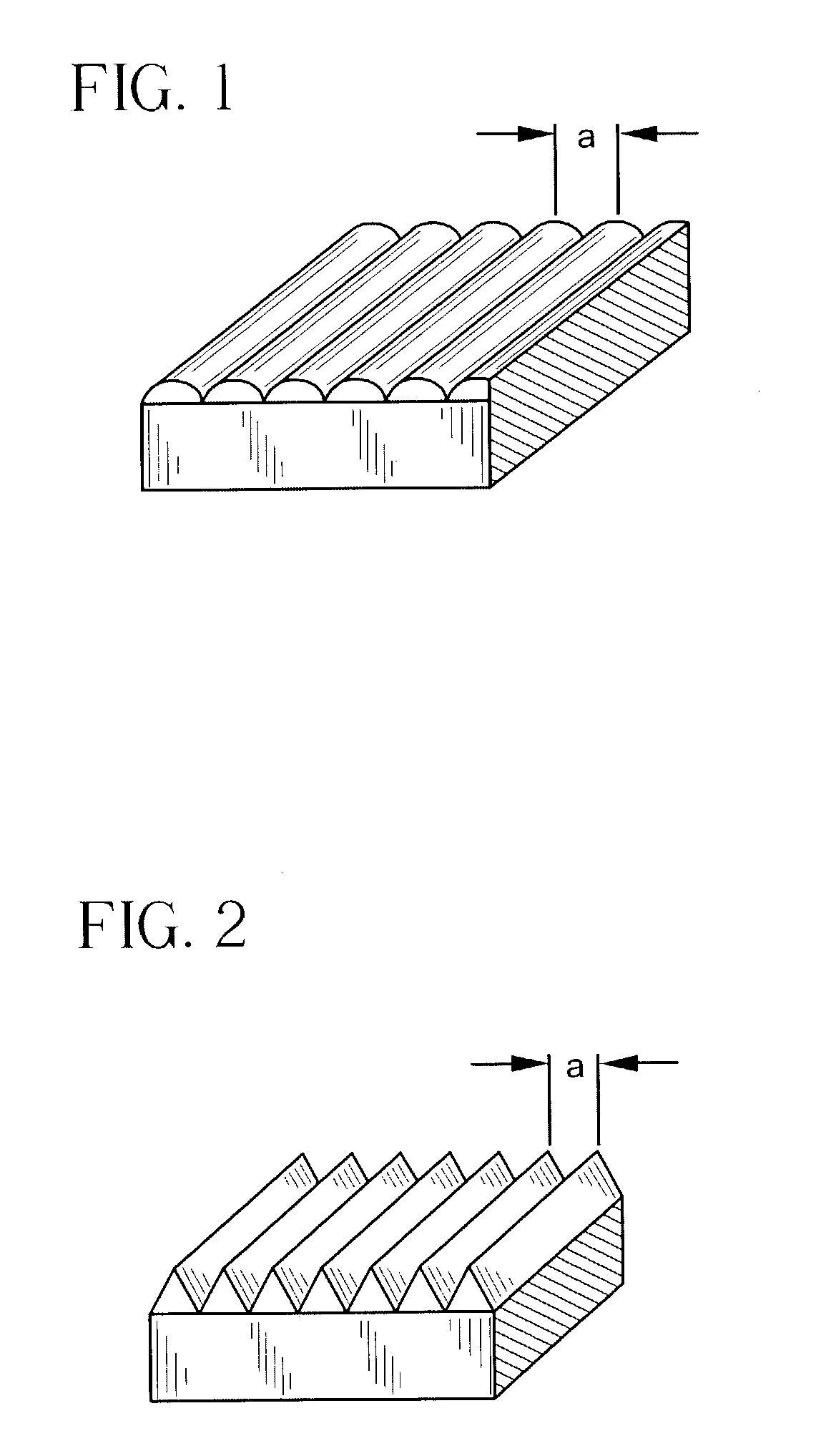Low-temperature fabrication of glass optical components
a technology of optical components and glass, applied in the field of optical components, to achieve the effect of high refractive index, cost-effectiveness, and substantial elimination of drawbacks of glass molding
- Summary
- Abstract
- Description
- Claims
- Application Information
AI Technical Summary
Benefits of technology
Problems solved by technology
Method used
Image
Examples
examples
[0072]In a series of studies, it was endeavored to mold and / or emboss optical components having fine, complex microstructures in compact shapes and sizes, using non-oxide glasses from either bulk-solid or powder forms (a wafer, a cube, a irregular shaped agglomerate or powder) in the mold. Optical components, such as MLAs, required a variety of complex shapes for densely packed individual lenses, aspheric lenses, or diffraction gratings, which may be used in optical switches, optical displays and the like. In particular, chalcogenide glasses, in which oxide species are absent, impart unexpectedly favorable molding characteristics. For the experimental examples described below, all moldings were carried out in air. No inert atmospheres such as nitrogen or argon was used during molding. In some specific cases, forced air or nitrogen gas was used to facilitate cooling of the molded parts and their removal.
[0073]The glass transition temperatures (Tg) of the chalcogenide glass samples ch...
PUM
| Property | Measurement | Unit |
|---|---|---|
| Tg | aaaaa | aaaaa |
| temperature | aaaaa | aaaaa |
| viscosity | aaaaa | aaaaa |
Abstract
Description
Claims
Application Information
 Login to View More
Login to View More - R&D
- Intellectual Property
- Life Sciences
- Materials
- Tech Scout
- Unparalleled Data Quality
- Higher Quality Content
- 60% Fewer Hallucinations
Browse by: Latest US Patents, China's latest patents, Technical Efficacy Thesaurus, Application Domain, Technology Topic, Popular Technical Reports.
© 2025 PatSnap. All rights reserved.Legal|Privacy policy|Modern Slavery Act Transparency Statement|Sitemap|About US| Contact US: help@patsnap.com



